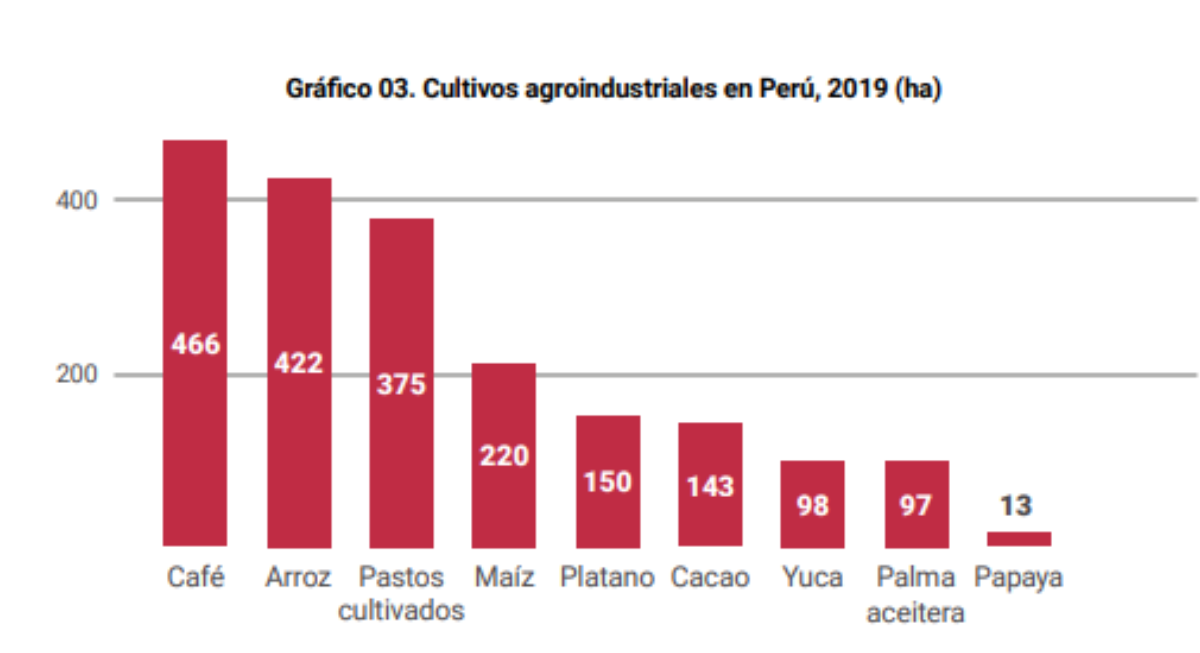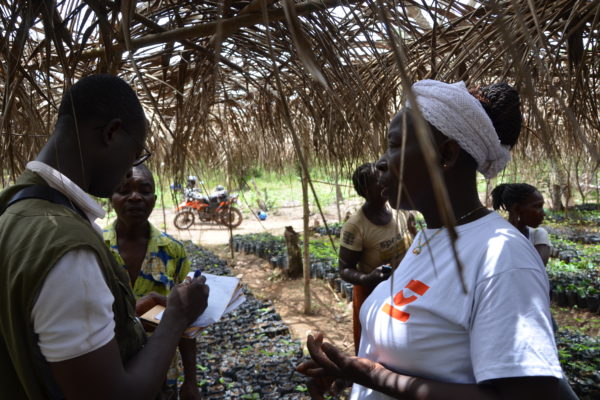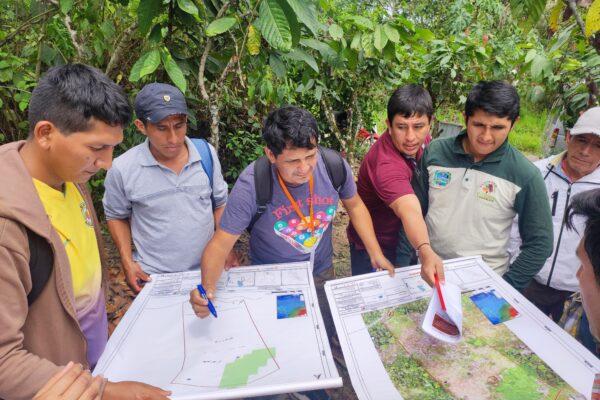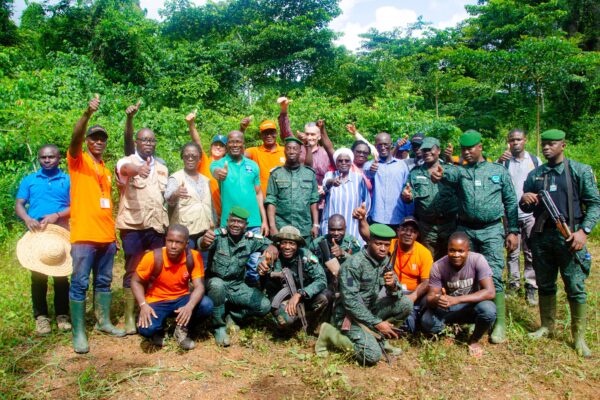This multimedia piece is part of Earthworm Foundation's awareness campaign on the importance of forests and healthy forest landscapes. Visit our #ForTheForests campaign page and follow #ForTheForests across social media channels to learn more.
Forests of Hope
Tocache is a treasure trove of biodiversity, but as the area emerged from a brutal internal armed conflict, its forests were increasingly cleared for oil palm and cocoa production. Now smallholders are embracing a more sustainable path.
On 7 March 2015, an alarming story appeared in the Guardian newspaper: 15,274 hectares of primary rainforest in Peru’s northern Amazon region was set to be destroyed to make way for oil palm cultivation.

Peru has the second largest area of Amazon rainforest after Brazil. This threat to an undisturbed stretch of natural forest – along with other reports of palm oil expansion in the Peruvian Amazon – signalled that the country could be heading down the calamitous path of Indonesia or Malaysia, where forests have been sacrificed on a colossal scale to feed the global palm oil market.
The news that Islandia Energy and Palmas del Amazonas - affiliates of Grupo Palmas, who supply palm oil to Nestlé - planned to develop the Amazon palm oil project, prompted intensive discussions between Grupo Palmas and Earthworm over what should be done.
Earthworm visited Grupo Palmas’ plantations, carried out an extensive analysis of the key sustainability challenges and potential conservation areas, and Grupo Palmas subsequently developed a sustainability policy with Earthworm’s support and guidance.
At its heart was the proposition that in order to grow its palm oil supply chain sustainably, Grupo Palmas should purchase more of it from smallholders.
The Peruvian government claim smallholders are responsible for 90 percent of the country’s deforestation – although much of this is linked to commodities other than palm oil. But aside from one scheme working with Indigenous communities, there is little support for them to tackle deforestation.
“Grupo Palmas had historically used a model of largescale plantations, which they managed themselves,” said Jonathan Maerker, Earthworm’s Global Landscapes lead, who helped implement the sustainability policy. “Instead they decided to work with smallholders, and help them ensure that was no deforestation in their sourcing areas.”
In December 2017, Grupo Palmas and Earthworm began the Rurality Smallholder Project.
The ideal site for this venture was the Tocache province, a key sourcing area for Peruvian palm oil around 250 miles northeast of Lima. Lying in the lush Huallaga river valley, and surrounded by sharp mountain peaks and national conservation areas, the valley floor is a treasure trove of biodiversity.
The fertile soil which makes Tocache ideal for growing oil palm, however, has also helped shape its tragic recent past.
This history still casts a shadow over the lives of many of its farmers, and underlines the project’s urgent social – as well as environmental – mission.
Trauma
Tocache’s population has soared in recent decades.
From the early 1970s, as the Peruvian Amazon was opened up with highways, tens of thousands of impoverished peasants from the Andes streamed into the Huallaga river valley seeking work.
The rich soil which was part of the region’s attraction – and which today makes it such a productive area for growing oil palm and cacao - also led to it formerly being one of the world’s prime regions for growing coca, the plant used to make cocaine.
By the mid-1980s, as a bloody insurgency gripped Peru, it was estimated that the Huallaga river valley produced 40 percent of the world’s coca leaves.
It was during this period that the Maoist terrorist group known as Sendero Luminoso (Shining Path) seized control of Tocache town, entering into a deadly alliance with drug dealers. Many farmers - caught in the crossfire between narcotraficantes (narcotraffickers), terrorists and the military - were forced to grow coca.
When the violence finally abated around 2000, the Peruvian government, with support from the US Agency of International Development (USAID), promoted palm and cacao as alternative crops to coca.
As stability returned to the area, and the number of oil palm and cacao farmers rose, deforestation increased.

From 2002 to 2020, according to Global Forest Watch (GFW), Tocache lost 9 percent of its humid primary forest.
Yet halting this deforestation - while simultaneously improving smallholders’ livelihoods and strengthening local businesses - aren’t the only challenges faced by the Rurality Project and the Landscape Project which has followed and built upon it.
The trauma of the war and being forced to grow coca by narcotraffickers still scars many smallholders, says Natalia Lozano-Broncales, EF Peru Project Manager. Yet for many of them, coca farming also became an economic necessity.
“If you don’t give the farmers an opportunity to grow a profitable crop, they are going to go back to coca leaf production, because everyone wants a better income and that’s an easier way to have it,” she said.
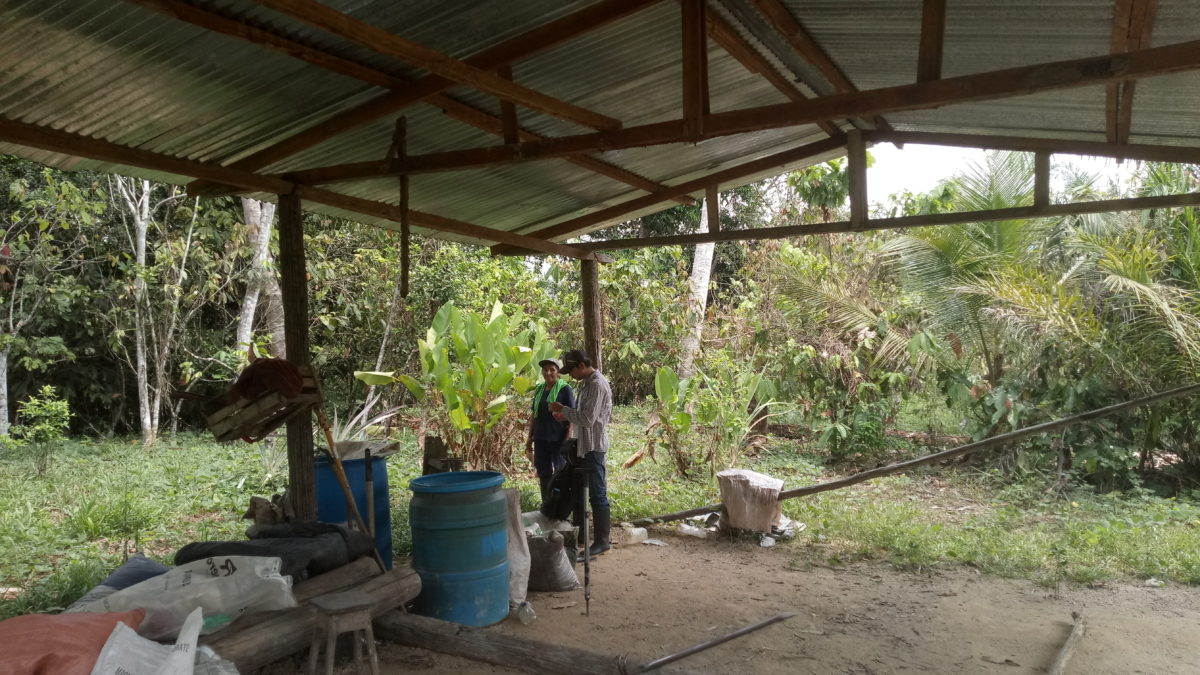
Initially, farmers’ views on the project were split.
“Some farmers were really glad that we’re helping them conserve the forests for future generations,” she explains. “On the other side, some said: ‘Oh no, I bought 50 hectares of land with all my savings, and now you’re saying that it’s forest and I can’t clear it.’ So it’s critical to give them an incentive for conservation.”
Reservoir of trust
Grupo Palmas’ long history in the area, and the reservoir of trust they built in that time, helped allay some of the farmers’ early fears.
Nilton Ruffner, Grupo Palmas’ Sustainable Business coordinator said this trust comes partly from the company not deserting Tocache during the war.
“Our offices here were attacked by terrorists, but we kept our operations going when no one else did,” Ruffer said.
Ruffner, whose commitment to the project is partly inspired by his personal history of growing up in the Amazon as a farmer’s son, divides Grupo Palmas’ journey toward sustainability into two phases.
The first was ensuring that the company complied with Peru’s environmental laws. The second followed the 2015 article in The Guardian - and coincided with Grupo Palmas becoming an Earthworm member in 2017 - is ensuring that they comply with international standards.
This includes commitments to protect High Carbon Stock forests (HCS) and areas with High Conservation Value (HCVs), as well as pledges to not carry out development on peat or in wetlands, while respecting local peoples’ rights.
The Rurality Project embodies Grupo Palmas’ commitment to local people, and was developed with suppliers from the company’s productive supply chain model (Cadenas Productivas), which aims to increase farmer productivity of while reducing pressure on forests.
“The most important thing is the smallholders, they’re now involved in legal and profitable activities,” Ruffner said.
Video: CEO Renzo Balarezo talks about the Grupo Palmas' sustainability journey and working with Earthworm Foundation to protect Peruvian forests.
Realising a vision
In 2019, Earthworm identified 62,500 ha of key conservation areas in the Tocache landscape, including forests, wetlands and waterbodies. This was done using High Carbon Stock (HCS) and High Conservation Value (HCV) methodologies.
These are complementary, internationally recognised systems the private sector uses to identify socially and environmentally important areas. Once these areas are detected – which in this instance was done in part through field-work by Grupo Palmas’ suppliers - they can be aligned with governments’ conservation maps.
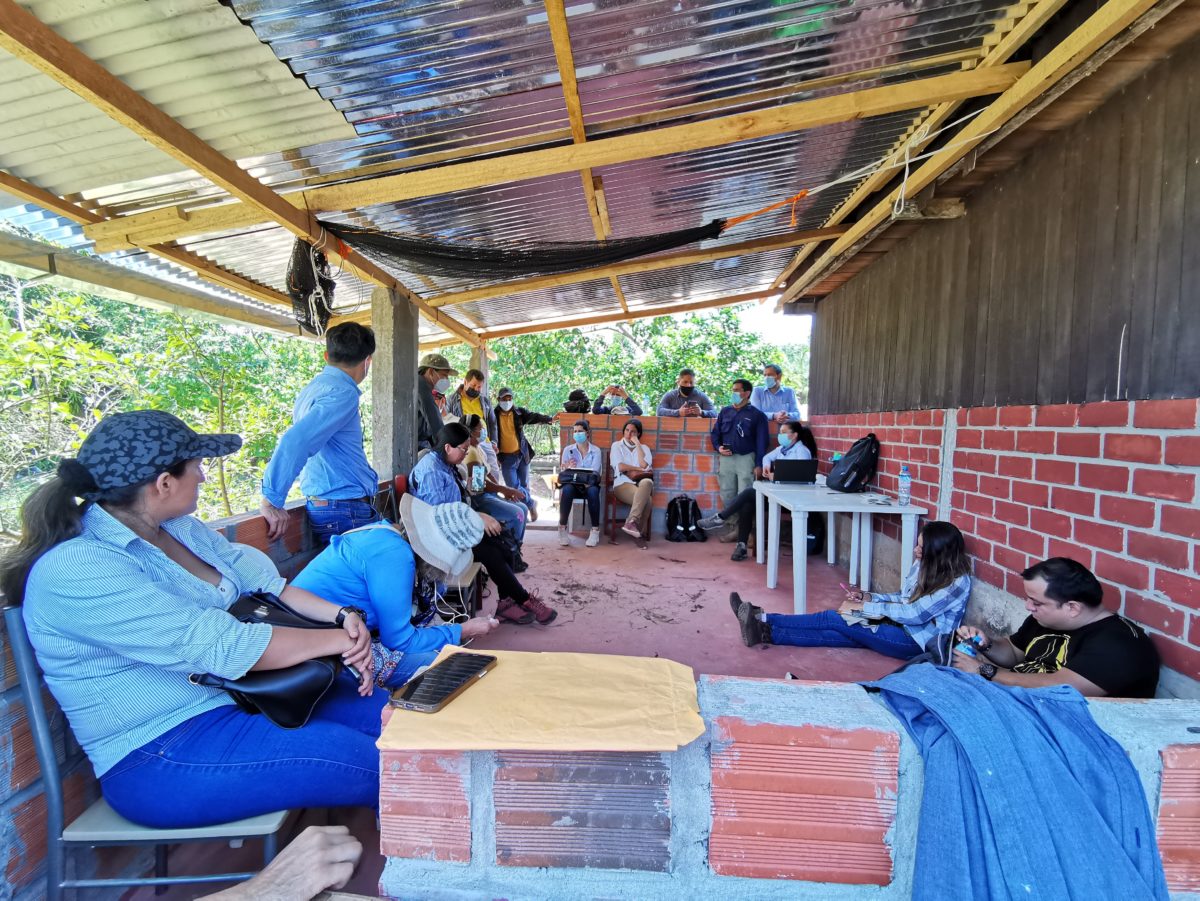
“This was really important, because it [a highly detailed conservation map of the area] didn’t exist before,” Maerker said. “By doing this, we could bring it to local government and other stakeholders, so that everybody can work towards a common vision for where we can do development, and which areas need to be conserved.”
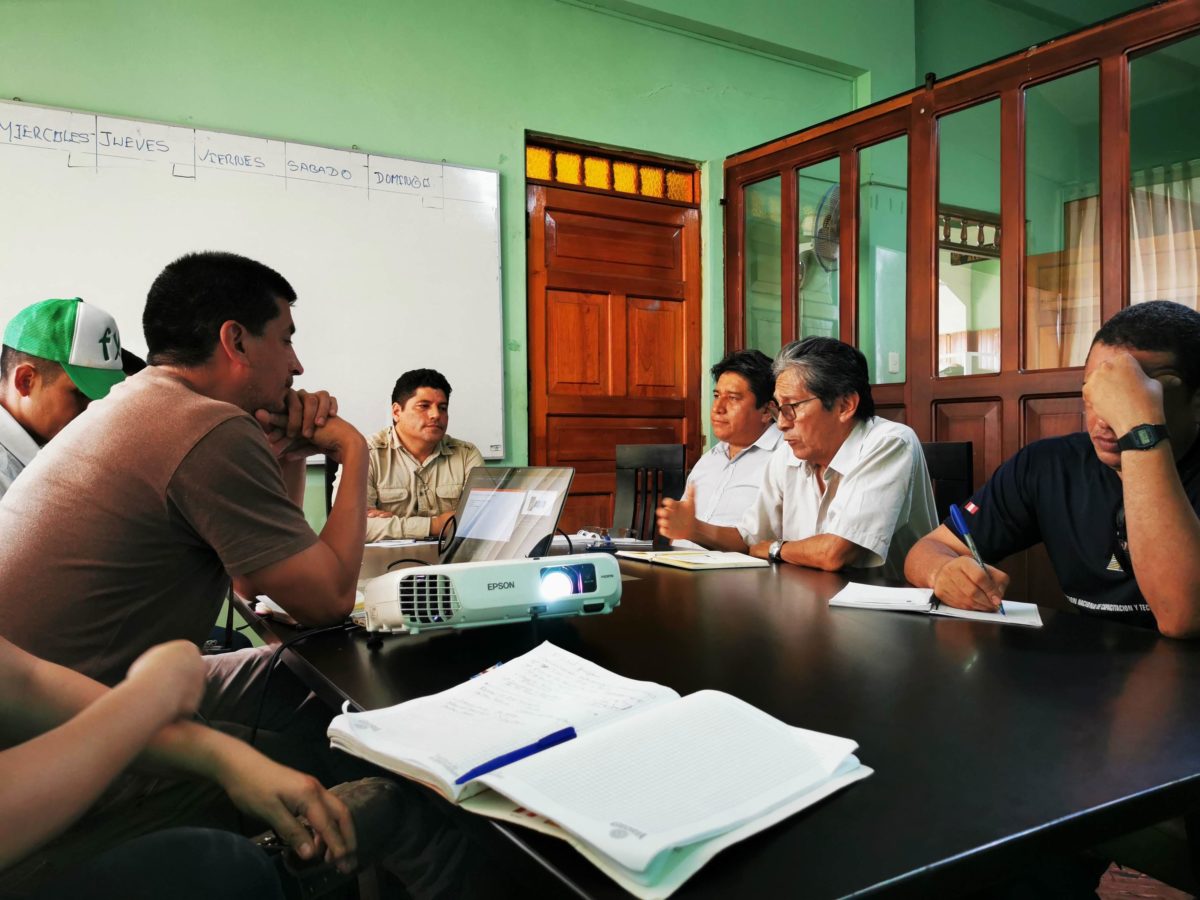
“At the heart of this kind of project is the idea that you need to work with other stakeholders who have different interests, in order to unite around a common vision for the landscape,” he added.
Among those other stakeholders is Earthworm’s and Grupo Palmas’ partner Sociedad Peruana de Ecodesarrollo (SPDE), who are supporting the project by providing training for NGOs, companies, cooperative staff and government officers.
“The farmers have a vision,” says Maerker. “What they don't always have is the means to realise it, in terms of financial literacy or access to finance. That's where the project comes in: it's helping people get the means to realise their visions.”
The Holistic Farm Management (HFM) approach is one way the project is helping farmers do this. In practice, this means smallholders are supported to switch from monoculture farms to diverse ones, such as guinea pig production, linked to the local market. This reduces the need to expand their crops, and therefore the risk of deforestation, and also means their income no longer depends on a single crop.
“We’re working with hundreds of farmers, engaging face to face to find out what the farmer wants to do with their farm, and how to do it in a sustainable way and really building relationships of trust with them,” Maerker said.
Reaping dividends
Marilú Bustamante de Aguinaga and her husband Wildor Aguinaga are among them. Both are offspring of parents who migrated to Tocache in search of better lives around 40 years ago.
When the couple first heard about the project at a meeting in Santa Lucía, they were unconvinced.
“Initially we thought it was just another project out of many,” Wildor said.
Nevertheless, they were reassured by the deep working relationship they had established with Grupo Palmas over decades: supplying the company with meat and groceries up until 2010, when they switched from ranching to cultivating oil palm, which Grupo Palmas partly financed.
Now, despite the recent upheaval caused by Covid-19, their involvement with the project is reaping dividends.
“It has given us a lot of knowledge on topics we never knew about, such as international markets, sustainability, resilience, high carbon stocks and high conservation values,” Wildor said.
They have also been using a 3D plan, prepared by EF’s team, to make their farm more productive.
Wildor added, “Above all, we learned about the design of integrated farms and how we learned to better plan our processes.”
As a result, their farm is being transformed. They have diversified their sources of income by breeding guinea pigs, as well as growing bamboo, wild cane and other plants on the margins of the streams which run through their farm.
“Our farm has changed significantly. It’s more sustainable and more resilient,” Wildor said.
Power of collaboration
As well as this direct support for smallholders like Marilú and Wildor, Earthworm is also striving to improve conditions on Grupo Palmas’ large-scale plantations.
“We’re working directly in their plantations on labour issues,” Maerker said.
This positive change is not just happening inside the plantations, but in the communities surrounding them.
“There’s now a community relation programme where a couple of people are employed to go out every month to the communities surround the plantation and continue to have a dialogue with them and understand what the issues are,” Maerker said.
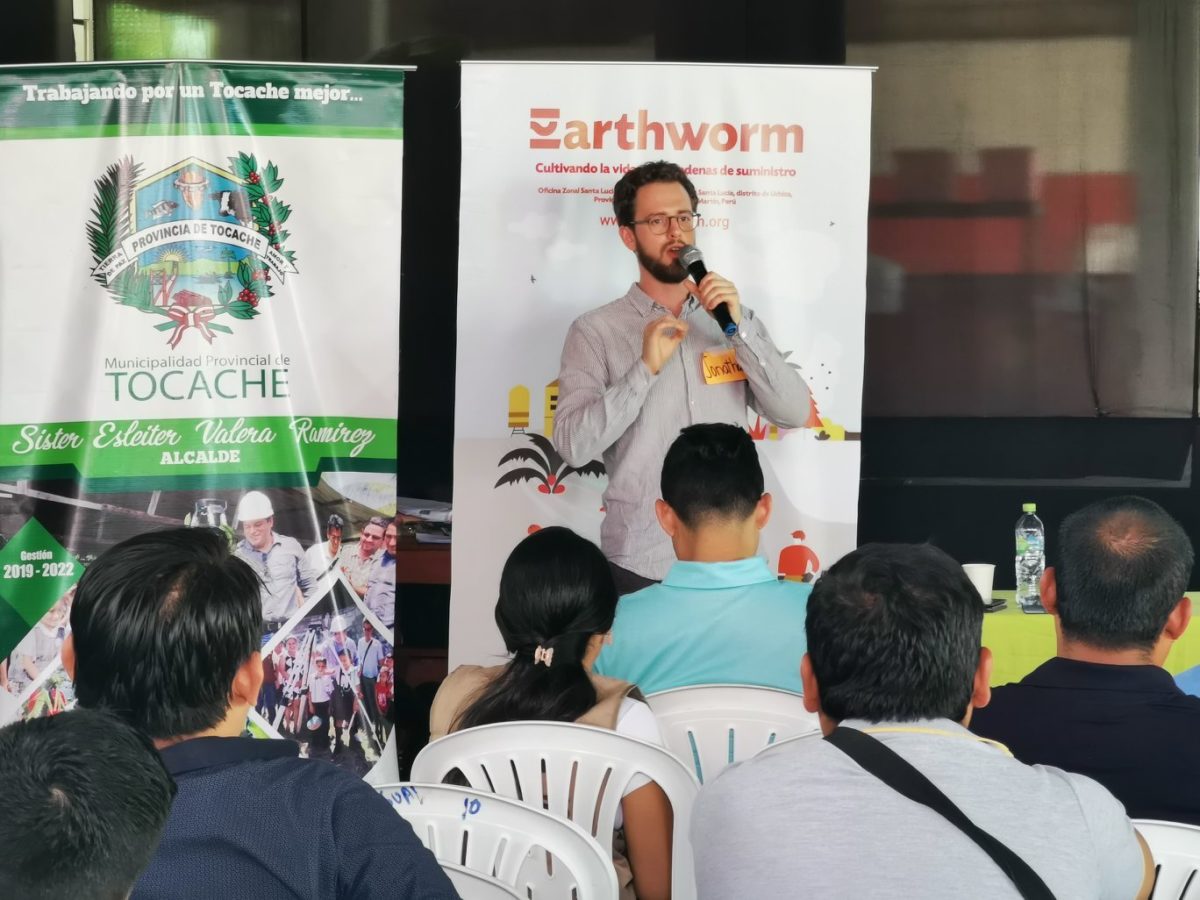
One measure of the project’s success to date, is that Tocache’s district government has integrated conservation mapping results into its own spatial planning processes. Another is that the Rurality Project has grown into a Landscape one, working on a larger scale with more companies and on more issues.
But the project’s ambition isn’t limited to protecting Tocache’s ecosystem and improving the livelihoods of its farmers – as admirable as these goals are. It is providing a concrete example of how the power of collaboration means that economic success does not have to come at an environmental cost.
“We are trying to influence the Peruvian government,” says Lozano-Broncales. showing that this is a sustainable way of doing agriculture while staying competitive.”
